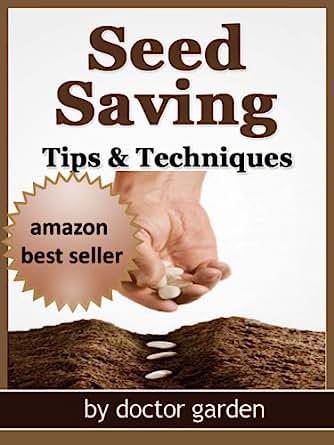Seed Saving and Storage Techniques for Propagation Purposes
Introduction:
For those who embrace the rural living and homesteading lifestyle, seed saving is an essential skill to master. By saving seeds from your garden, you not only ensure a continuous supply of plants but also contribute to the preservation of heirloom varieties. Additionally, seed saving allows you to select and propagate plants that are best suited for your specific growing conditions. In this article, we will explore various seed saving techniques and discuss proper storage methods to maintain seed viability.
Understanding Seed Types:
Before delving into the specifics of seed saving, it is crucial to understand the distinctions between different types of seeds. There are open-pollinated (OP), hybrid, and heirloom seeds.
Open-pollinated (OP) seeds are pollinated naturally by wind or insects without human intervention. These seeds produce plants with characteristics identical or very similar to their parent plant. OP seeds can be saved and replanted year after year while maintaining consistency in traits.
Hybrid seeds result from cross-pollination between two different varieties within the same species. The goal is to combine desirable traits from both parents; however, offspring resulting from hybridization will not “come true” if their saved seeds are planted in subsequent generations. Therefore, it’s generally not recommended to save hybrid seeds for propagation purposes.
Heirloom seeds are open-pollinated varieties that have been passed down through generations because of their unique characteristics or historical significance. These cultivars often possess excellent taste qualities or adaptation capabilities specific to certain regions.
Basic Seed Saving Techniques:
1. Isolation: To prevent unwanted cross-pollination between different varieties of the same species (except when intentional), isolation techniques should be employed based on each plant’s pollination method.
– Self-Pollinating Plants: Plants such as tomatoes, peppers, lettuce, beans, peas often self-pollinate before flowers open fully since they have both male and female parts in the same flower. These plants require minimal isolation since they are less likely to cross-pollinate.
– Cross-Pollinating Plants: Cucurbits (squash, cucumbers, melons), brassicas (cabbage, broccoli), corn, and most flowering plants rely on pollinators for cross-pollination. Isolation can be achieved by distance or physical barriers like netting or hand-pollination techniques.
2. Seed Harvesting: Seeds should be harvested when fully mature but before they disperse naturally. Each plant has unique indicators of seed maturity:
– Vegetables: Collect seeds from overripe fruits that have turned completely ripe or even slightly past eating stage.
– Flowers: Allow seed heads to dry on the plant until seeds are brown and hard.
– Herbs: Harvest herb seeds when flowers start to fade but before they shatter.
3. Seed Cleaning and Processing: Before storing seeds, it is crucial to remove any debris or unwanted material through proper cleaning techniques. The process may involve winnowing, sieving, or using water flotation methods depending on the size and structure of the seed.
Seed Storage Techniques:
Proper storage is vital for maintaining seed viability over an extended period. Factors such as temperature, humidity levels, and light exposure significantly affect seed longevity.
1. Temperature Control: Storing seeds at low temperatures helps extend their shelf life significantly.
– Cool Storage: Most vegetable seeds remain viable for several years if kept at a cool temperature between 32°F (0°C) and 41°F (5°C). A refrigerator can serve as an ideal storage location.
– Freezer Storage: Certain species with short shelf lives benefit from freezer storage at temperatures around 0°F (-18°C). However, freezing may damage some sensitive seeds with high moisture content.
2. Moisture Management:
Seeds require low moisture levels during storage to prevent germination or fungal growth.
– Desiccants: Adding moisture-absorbing materials such as silica gel or powdered milk to seed storage containers can help maintain low humidity levels.
– Airtight Containers: Using airtight containers like glass jars or mylar bags with moisture-proof seals prevents excess moisture from seeping into the seeds.
3. Darkness and Light Exposure:
Protecting seeds from light exposure is crucial for maintaining their viability over time.
– Dark Storage: Store seeds in opaque containers or envelopes to shield them from direct sunlight or artificial light sources. This helps prevent premature germination caused by light exposure.
4. Labeling and Record Keeping:
Properly labeling stored seeds with essential information such as plant name, variety, harvest date, and any specific instructions ensures easy identification and maintains an organized record of your seed collection.
Conclusion:
Seed saving is a valuable skill that allows homesteaders to preserve heirloom varieties, select ideal plants for their growing conditions, and become more self-sufficient. By understanding different seed types and employing proper techniques for isolation, harvesting, cleaning, and storage, you can ensure consistent success in propagating plants year after year. So go ahead – embrace the art of seed saving and contribute to the preservation of agricultural biodiversity while enjoying the benefits of sustainable gardening practices on your rural homestead!


Leave a comment